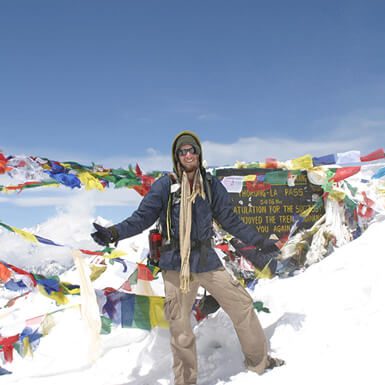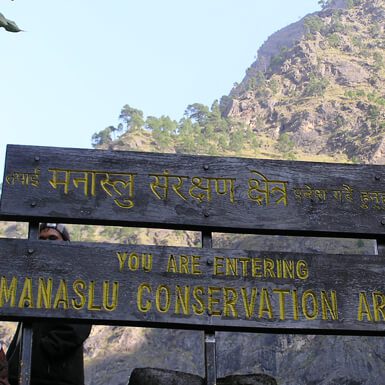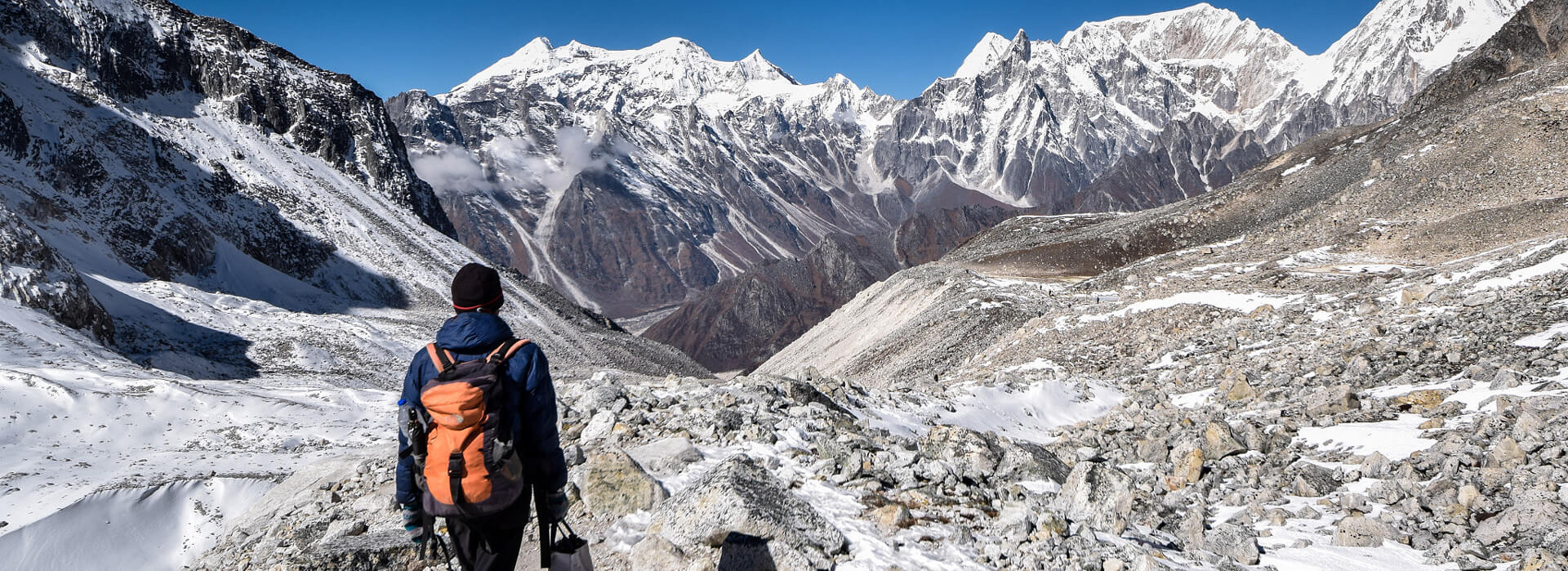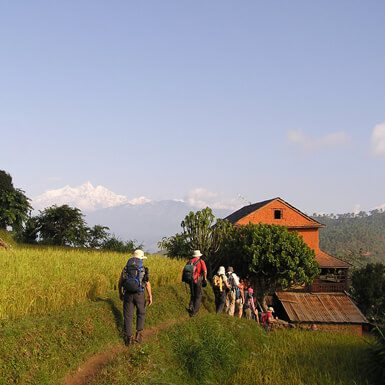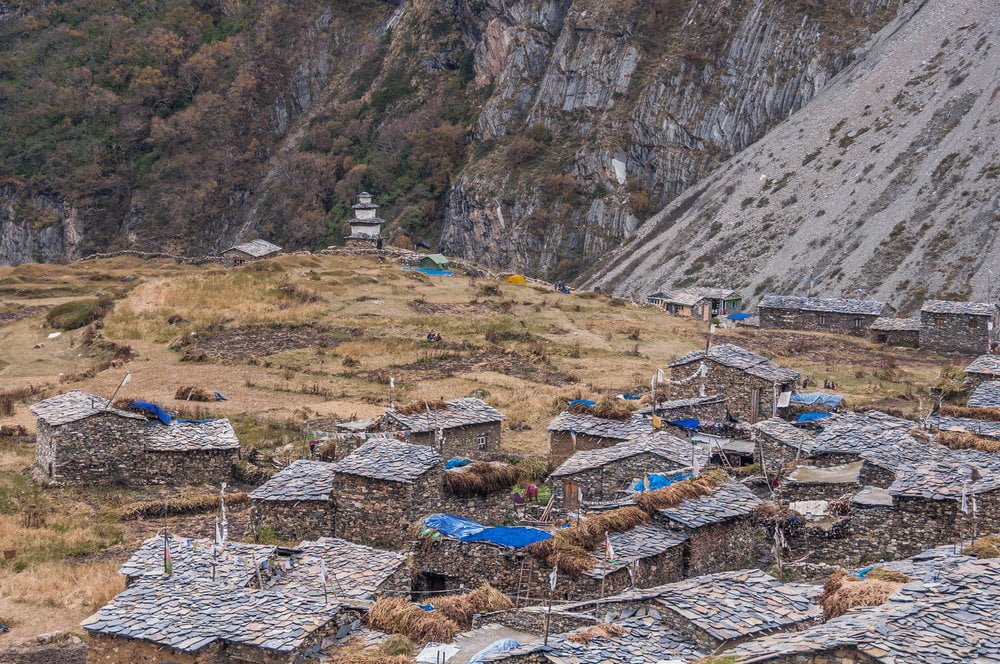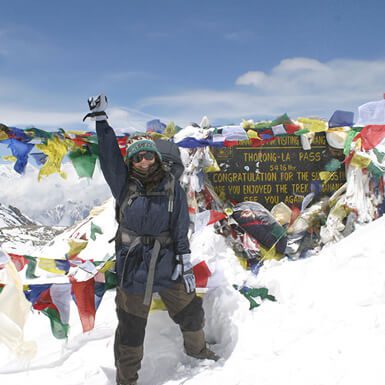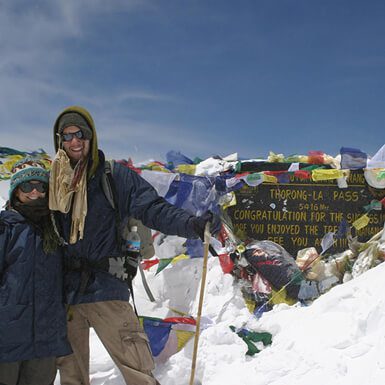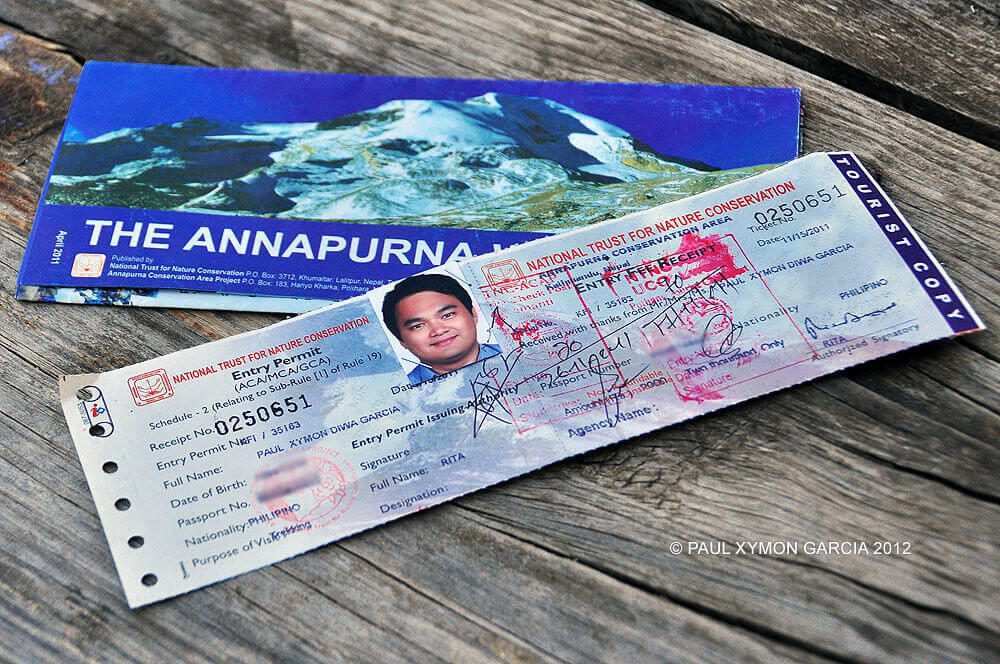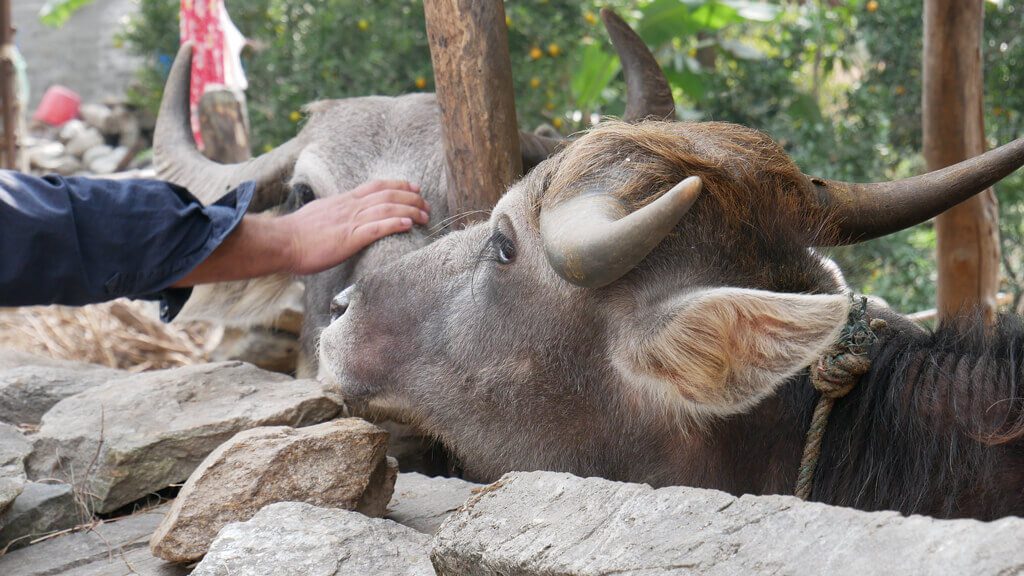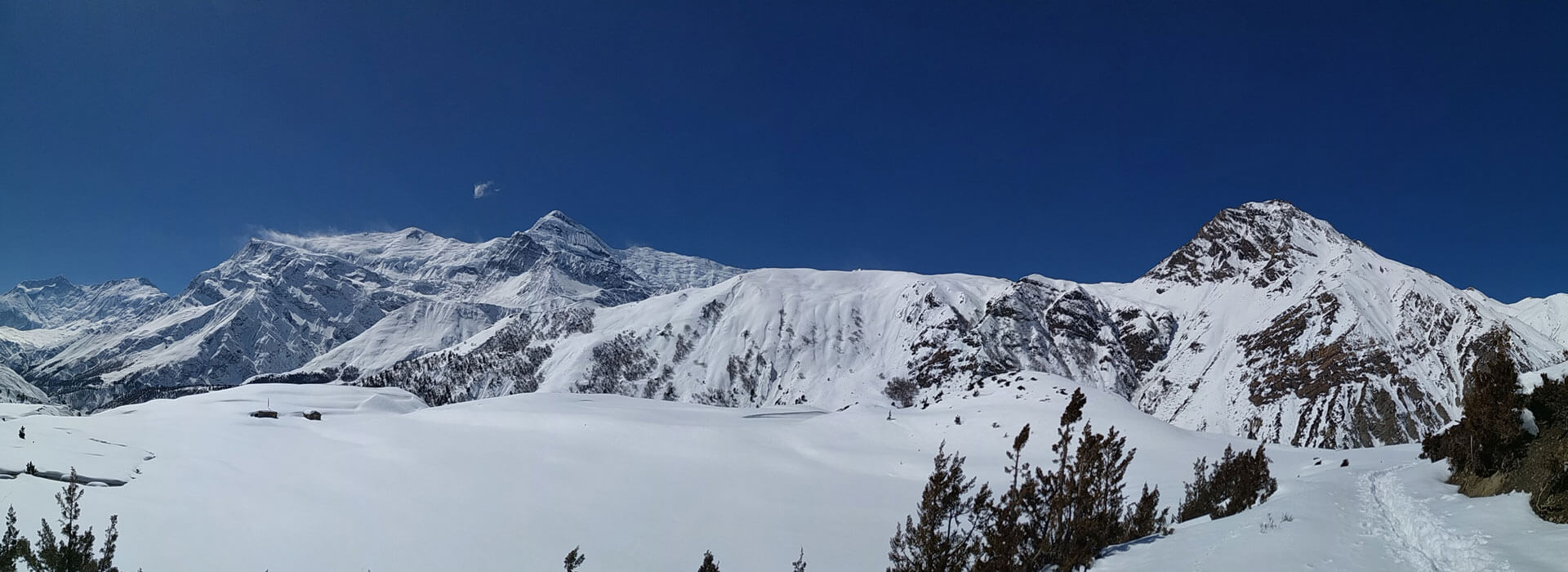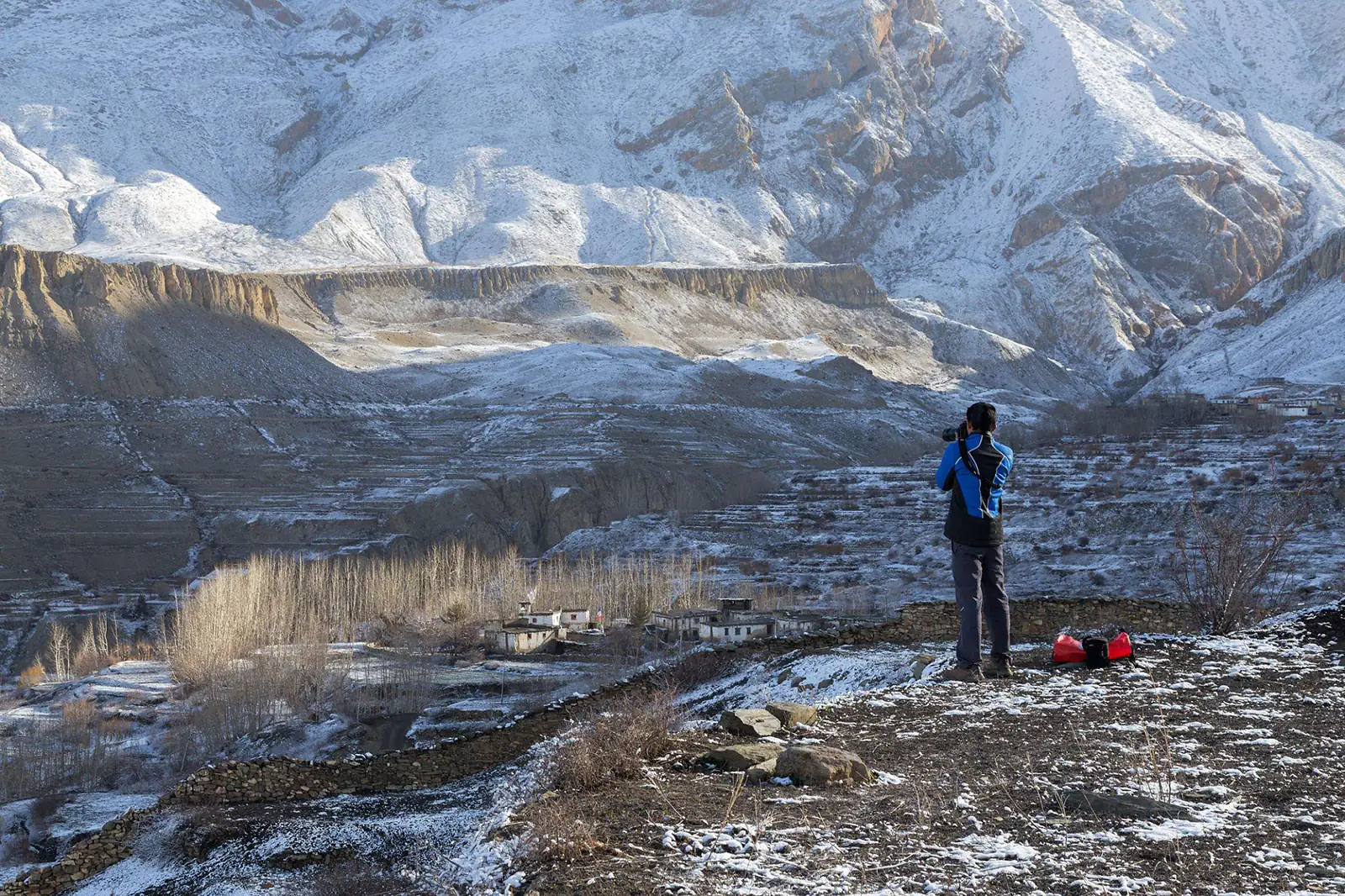When is the Best season for Annapurna Circuit Trek?
You can do the Annapurna Circuit Trek any time of the year; however, if you are looking for perfect weather conditions for trekking in Annapurna. In that case, Autumn (September-November) and Spring (March-April) are the two best seasons for the Annapurna trek in Nepal.
Autumn (September-November): Autumn is the peak season to trek the Annapurna Circuit. Since autumn arrives right after the monsoon, the sky is bright and clear, the valleys are still green, the Annapurna Circuit weather and temperature are perfect for trekking, and the views of the pristine mountains are simply spectacular.
Since it is the peak season for trekking, the trail becomes very crowded; hence pre-booking for the accommodation is recommended.
Spring (March-April): Spring is the second-best time to go Annapurna Circuit Trekking. Since spring starts after the colWinterer, the trails become free from snow, the weather is pretty warm, blooming rhododendrons and other flowers beautify the trail, and the sun shines bright.
Like in autumn, a massive crowd is on the trail, so pre-booking for the accommodation is recommended.
Summer (May-July): It’s boiling and rainy this time. The clouds block the views, the trails become muddy, and sometimes landslides affect the trail. Hence, it is not considered the best time to trek the Annapurna Circuit.
Winter (December to February): During winter, the weather is freezing and dry. Heavy snowfall might sometimes block the trail. Also, the local people migrate to a lower altitude to escape this harsh weather. Most of the teahouses and lodges are closed during winter. Therefore, winter is also not viewed as a good time for Annapurna Circuit Trekking.
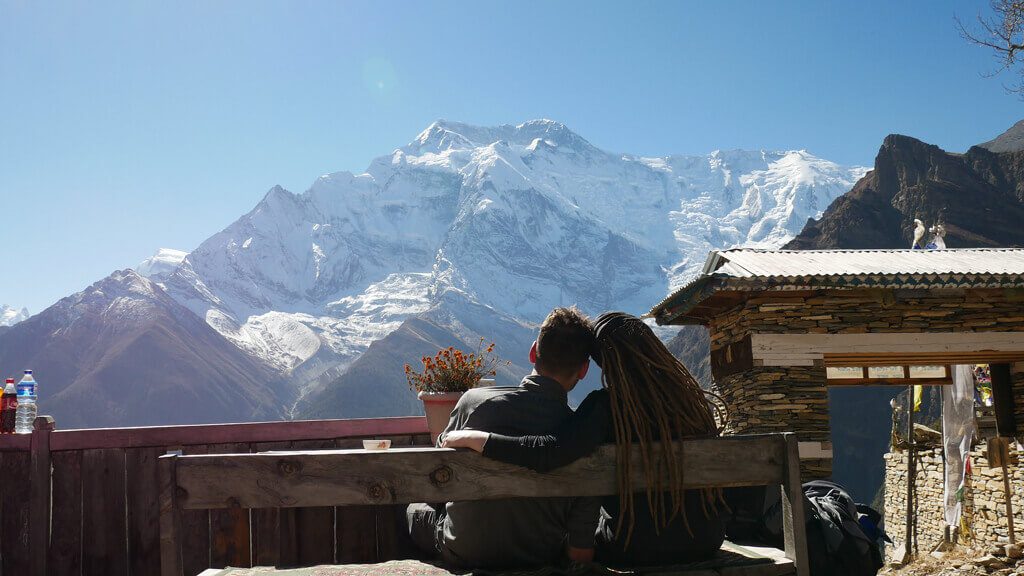
What to pack?
Since Annapurna Circuit is a long-distance trek, packing the right thing is essential. Avoid unnecessary things.
Here is the Annapurna Circuit Trek packing list that you will need during the trek:
Clothing:
- Hiking Pants (1 pair)
- Long sleeve shirt (1)
- Short sleeve shirt (1)
- Socks (2 pairs)
- Comfortable and warm pants (1 pair)
- Down Jacket (1)
- Warm hat (1)
- Underwear
- Sun hat
- Gloves
- Raincoat
- Hiking boots
- Sunglasses
Trekking Gears:
- Backpack
- Trekking poles
- Camera with battery
- Phone & Cord
- Sleeping bag, pillowcase
- Plug adapter with built-in USB ports
- Water bottle, headlamp
- Pack rain cover
- Passport and permits
Toiletries:
- Soap, Shampoo, Toothbrush, Toothpaste, Towel, Deodorant, Sunscreen, Lip Balm, Sanitary Napkin,
Others:
- First Aid Kit, Book/Kindle, Notebook/Journal, Extra cash, travel games, Binoculars, Energy bars/Chocolates, Peanuts, etc.
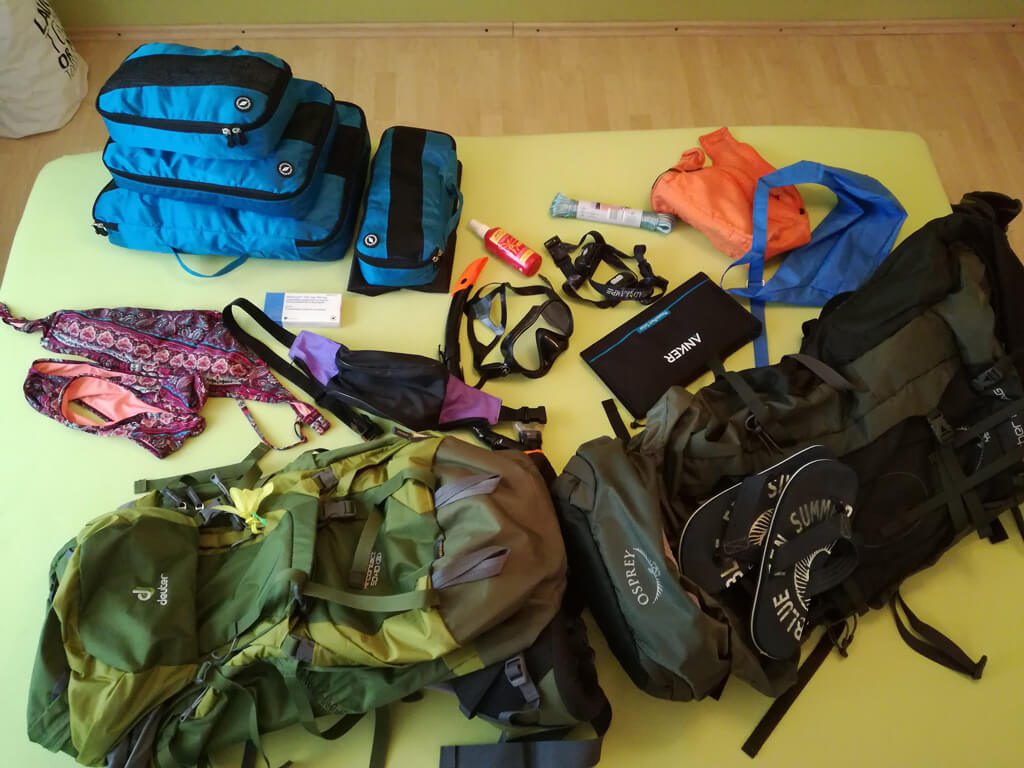
Permits required for the Annapurna Round Trek
Most of the trekking trails in the Annapurna region are within the Annapurna Conservation Area. Thus, trekkers from foreign countries must have an Annapurna Conservation Area Project (ACAP) entry permit and a Trekkers Information Management System (TIMS) card to circumnavigate the Annapurna Circuit.
Annapurna Circuit Trek Permits and Fees:
- ACAP entry permit fee for foreigners: 3,000 NPR (Approx. US $30)
- ACAP entry permit fee for SAARC nationals: 200 NPR (Approx. $2)
- TIMS permit: 1,000 NPR (Approximately. US $10), if you are in a group and 2,000 NPR (Approximately: US $20) if you are a Free Individual Traveler(FIT)

Accommodation options during the Annapurna Circuit Trek
Annapurna Circuit Trek is a classic teahouse trek in Nepal. Thus, many tea houses and lodges along the trail accommodate trekkers. The accommodation in this trek is quite basic, and it gets more essential as you progress toward higher altitude settlements. The rooms are usually on a twin-share basis with shared and sometimes attached bathrooms.
Generally, they don’t provide a separate heater, but they have a common area with a fire and good company. Though limited, wifi is available in some tea houses.
Food during the Annapurna Trek
With the increasing number of trekkers every year, the food quality has been getting better, and you can find varieties of food in most of the teahouses along the trail. Most tea houses now serve spaghetti, pasta, sandwiches, etc.
Yet Dal Bhat(Rice, Dal, Curry, Pickle, Salads), a typical Nepali meal, is the best value for money. It is tasty, filling, and inexpensive. Drinks like water, beer, soda, and tea/coffee are available throughout the trail.
While eating, you will notice that the price increases as you go higher.
So, to save money, I highly recommend bringing a water bottle and energy boosters like chocolate bars and energy bars.
Annapurna Circuit Trekking Difficulty: How fit must I be to complete this trek?
Talking about the Annapurna Circuit Trek Difficulty is a moderately challenging trek in Nepal. It’s a long trek that takes 10 to 28 days, depending on your chosen package. Usually, you will have to walk for 6 to 8 hours a day to complete the trek.
If you are physically and mentally fit, you can quickly complete the trek. However, if you are trekking in the winter, you must also be prepared for tiring ascending and descending and walking on snow and ice trails.
The most difficult of this trek is the trail from Thorung Phedi to Thorung La pass, which is just a 45-minute walk, but the altitude makes it very challenging.
Be careful about Acute Mountain sickness. It is the most common difficulty that most travelers face during this trek. To avoid the sickness, you should walk slowly (don’t rush), properly acclimate, and always keep yourself hydrated.
Some common symptoms of altitude sickness are nausea, diarrhea, headache, loss of appetite, fatigue, and insomnia.
To complete the trek, you must be physically fit, have the endurance required to walk 4-8 hours daily, and have strong determination.
How do I prepare my body ready for the Annapurna Circuit Trek?
First, do a health check-up to prepare for the Annapurna Circuit Trek. Once your doctor approves that you are in good shape, consult about the necessary exercises and walk with your doctor to train yourself for the trip.
Focus on cardio and muscle-strengthening exercises. Start exercising at least 4-6 weeks before the trek. Eat healthily. If possible, go for a short hike; it helps prepare you mentally for the trek.
Other Essential Things for the Annapurna Trek
Travel Insurance: Travel insurance is necessary if you are trekking in Nepal. Your travel insurance should cover every extra expense due to injuries, health issues, or accidents. It should also include the cost of an ambulance, helicopter rescue, doctor’s fees, treatment costs, hospital charges, repatriation costs, theft and liability, cancellation, and misplaced luggage.
Since the Annapurna Circuit Trek takes you over 5,000 meters, the policy should cover the trek over 5,000m.
Map: A map is an essential item for trekking in Nepal. If you hire a trekking agency to manage your trip, they will provide a map as a complimentary gift. However, if you are trekking the Annapurna Circuit without a guide or a porter, buy a map before starting the trek.
Annapurna Circuit Trek Transportation
The Annapurna Circuit trekking starts at Besisahar and ends at Nayapul (pure trekking). However, trekkers who do not want to walk the entire trail can always take a flight or local transportation from Jomsom.
You can easily find transportation to Besisahar from Kathmandu and Pokhara.
Related Articles
Recommendations for solo travelers
I highly recommend that all travelers hire a guide and a porter or join a group. Traveling in groups ensures a safe journey, and budget travelers can save a lot.
However, if you insist on solo trekking, we recommend traveling during the peak season.
Please contact us if you are planning a trek to the Annapurna Region or have any questions about the Annapurna Circuit Trek.
